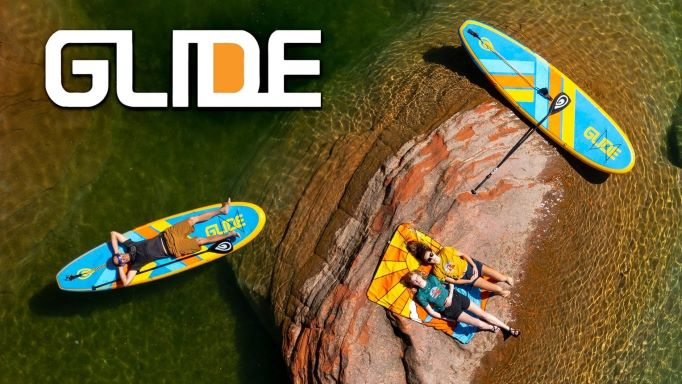
What is Paddle Boarding?
Have you ever wondered about the magic of standing on water? Paddle boarding, or as it's officially known, stand-up paddleboarding (SUP), offers just that. This engaging water sport allows you to glide over water surfaces, from serene lakes to the undulating ocean waves. Let's dive into the world of paddleboarding, exploring its essence, history, necessary gear, various types, and tips for beginners.
Key Highlights
- Discover the Essence of Paddle Boarding: Learn what makes SUP a unique and accessible sport for all, offering a mix of tranquility and adventure.
- Uncover Paddle Boarding's Rich History: Trace paddleboarding's origins from ancient Polynesia to its modern-day global popularity.
- Essential Gear for Paddle Boarding: Understand the key equipment needed, including the right board, paddle, personal flotation device (PFD), leash, and appropriate water attire.
- Exploring Different Types of Paddle Boarding: Dive into the various styles of SUP, including flatwater, ocean, and river paddleboarding, as well as SUP yoga and fitness.
- Beginner Tips for Paddle Boarding Success: Get started with practical advice on lessons, choosing the right equipment, dressing appropriately, and mastering the basics on calm water.

The Essence of Paddle Boarding
Paddleboarding is not just a sport; it's an experience. Imagine propelling yourself through water on a board that feels like an extension of your body, using nothing but a paddle. This sport is accessible to everyone, offering a blend of tranquility and adventure across any body of water. Whether you're into SUP yoga, fishing from your board, or catching waves, paddleboarding is as versatile as it is exhilarating.
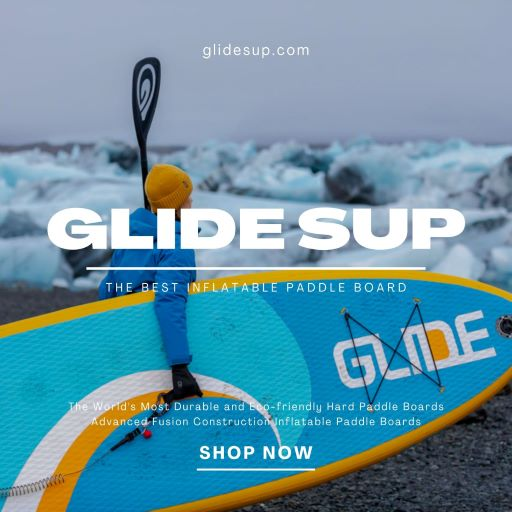
A Glimpse into Paddle Boarding's Rich History
The roots of paddleboarding trace back to the ancient Polynesians, evolving through Hawaiian surf culture into the diverse activity we know today. Initially, Hawaiian surfers in the mid-20th century used paddles to navigate waves, laying the groundwork for modern paddleboarding, which has now spread globally as a beloved water sport.

Gear Up for Paddle Boarding
To start your paddleboarding adventure, you'll need a few key items: a paddleboard, which comes in various shapes and sizes tailored to different water types and activities, and a paddle, often made of lightweight materials for ease of maneuvering. Don't forget your personal flotation device (PFD), a leash for safety, and appropriate attire for the water's temperature
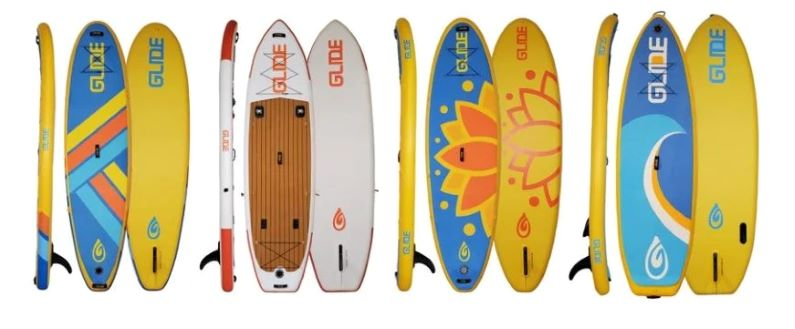
Exploring the Types of Paddle Boarding
Paddleboarding's beauty lies in its diversity. From the tranquility of flatwater paddleboarding on lakes and ponds to the thrill of navigating ocean waves or river currents, there's a style for every enthusiast. SUP yoga and fitness add a unique twist, combining physical exercise with the calming effects of being on water.
-
Flatwater paddleboarding: Flatwater paddleboarding is done on calm, still water such as lakes, ponds, or canals. This type of paddleboarding is ideal for beginners or those who want a relaxing and peaceful experience on the water.
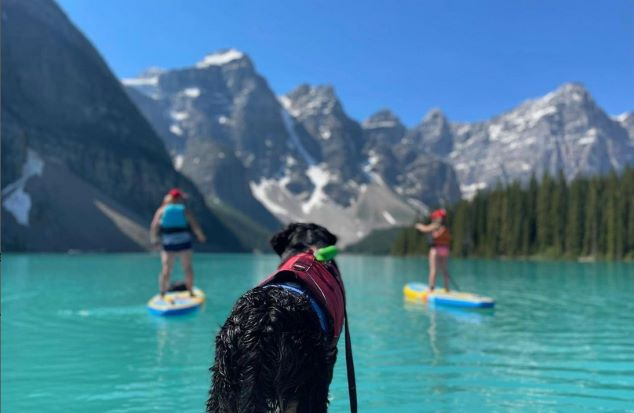
-
Ocean paddleboarding: Ocean paddleboarding is done on the open sea and involves navigating waves, wind, and currents. This type of paddleboarding requires more skill and experience than flatwater paddleboarding and is popular among advanced riders.
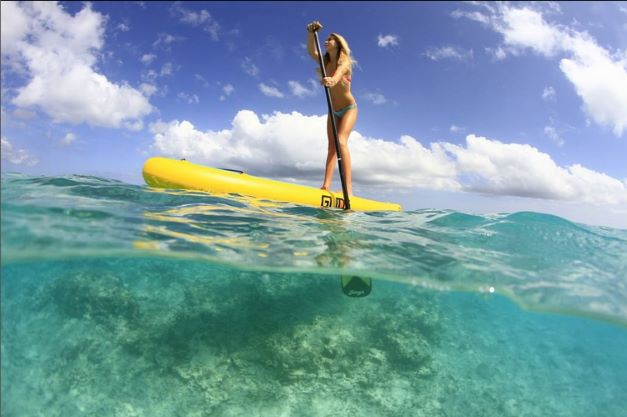
-
River paddleboarding: River paddleboarding is done on moving water such as rivers, streams, or rapids. This type of paddleboarding requires a high level of skill and experience and is popular among thrill-seekers and those who enjoy the challenge of navigating fast-moving water.
-
SUP yoga: SUP yoga is a form of paddleboarding that combines yoga and paddling. Participants perform yoga poses on the paddleboard, which adds an extra challenge to the practice and requires a high level of balance and stability.
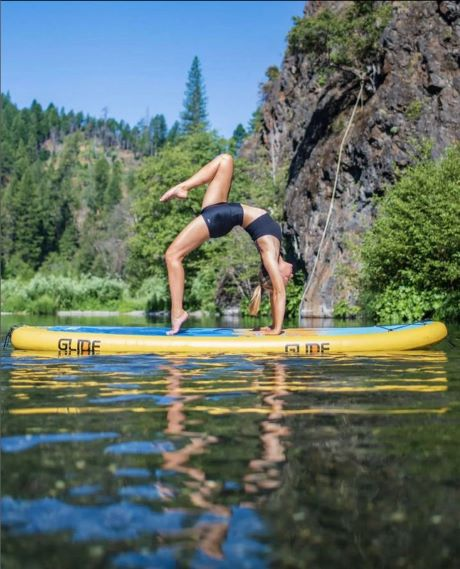
-
SUP Fishing: SUP Fishing is an amazing way to get on the water and explore your favorite fishing hole, from fly fishing to sight fishing or trolling, fishing from a paddle board is the ultimate way to fish and explore.
-
SUP fitness: SUP fitness is a form of paddleboarding that involves a workout routine performed on the paddleboard. The workout can include cardio, strength training, and balance exercises, and it can be done on flatwater or in the ocean.

Tips for Paddle Boarding Beginners
For those new to the sport, consider starting with a lesson from a certified instructor to grasp the basics and ensure your safety. Choosing the right board and paddle is crucial - beginners might prefer a wider, more stable board for easier balance. Always dress appropriately for the water conditions, and start on calm water to build your confidence and skills.
-
Take a lesson: Taking a lesson with a certified instructor is the best way to learn the basics of paddleboarding and to ensure your safety on the water. A lesson will also give you the opportunity to try different types of boards and paddles and to learn proper paddling techniques.
-
Choose the right equipment: When choosing a board and paddle, consider your skill level, the type of water you will be paddling on, and your personal preferences. A wider, more stable board is ideal for beginners, while a narrower, more maneuverable board is better for advanced riders.
-
Dress appropriately: Wear appropriate clothing for the weather conditions and the temperature of the water. If the water is cold, wear a wetsuit or drysuit, and if the water is warm, wear comfortable, breathable clothing. Always wear a PFD and a leash for safety.
-
Start on calm water: Begin on calm, still water such as a lake or pond until you feel comfortable standing and balancing on the board. Once you feel confident, you can move on to more challenging water conditions.
-
Practice proper paddling technique: Use your core muscles to paddle, rather than your arms, and keep your eyes on the horizon to maintain balance. Take short, smooth strokes and switch sides regularly to avoid fatigue.
Conclusion
Paddle boarding offers an unparalleled connection to nature, blending physical activity with mental relaxation. It's a sport that adapts to your preferences, whether you seek a peaceful paddle at dawn or an adrenaline-fueled session in the waves. Embark on your paddleboarding journey today and discover the joy and freedom of gliding across water.
-

